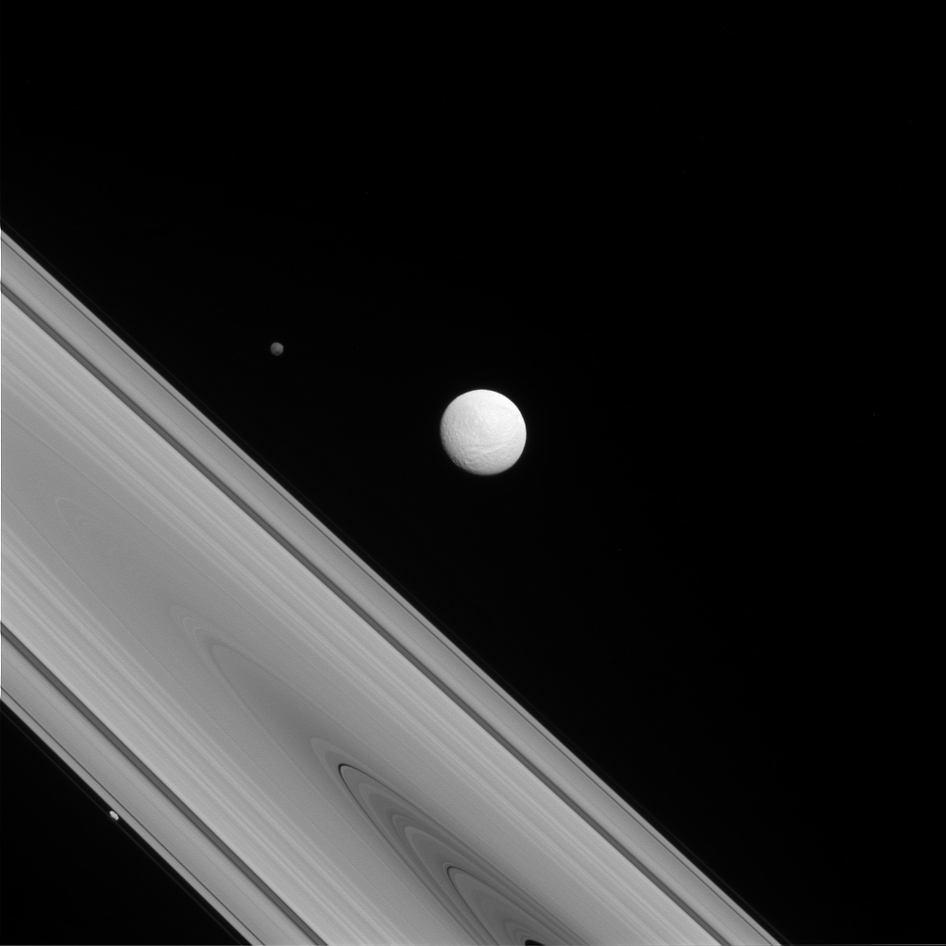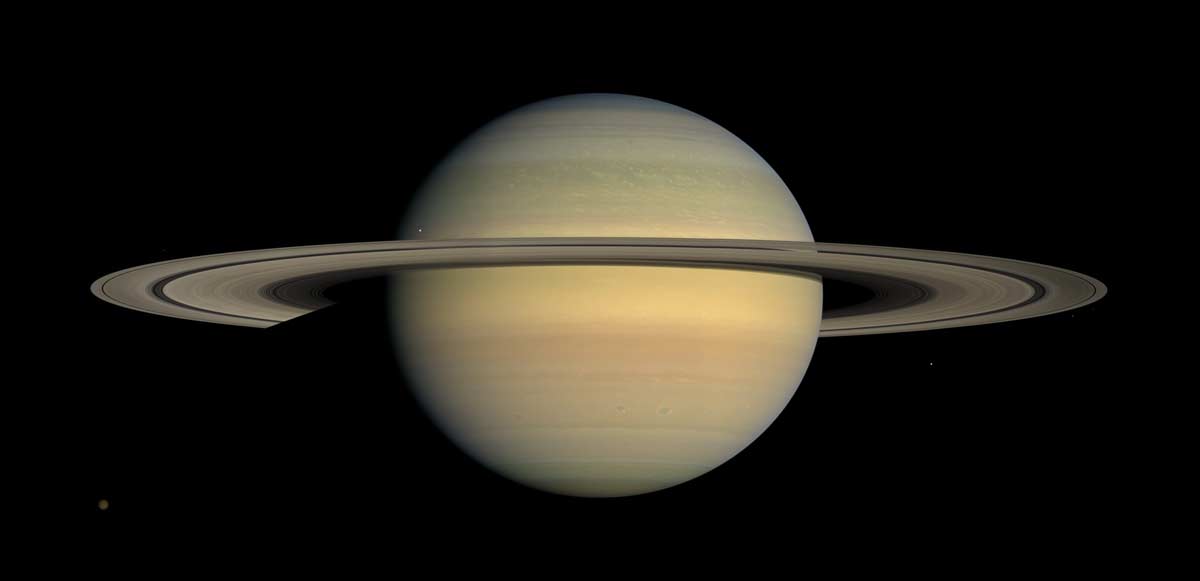
NASA's Cassini spacecraft has snapped a stunning photo of three Saturn moons, showing the satellites in all their disparate glory.
The newly released image captures the Saturn moons of Tethys (center), Hyperion (upper left) and Prometheus (lower left), along with the gas giant's iconic rings. While NASA released the photo on Monday (Sept. 22), Cassini actually took the picture on July 14, when it was about 1.2 million miles (1.9 million kilometers) from Tethys.
The three moons are vastly different from each other. At 660 miles (1,062 km) wide, spherical Tethys is by far the largest of the three and sports a diversity of landforms on its frigid surface. Hyperion is 174 miles (280 km) across and irregularly shaped; the moon is known for its chaotic rotation and strange, deeply pitted surface, which resembles a sponge.
Prometheus is the smallest of the three pictured moons, with a diameter of just 53 miles (86 km). Prometheus orbits near the inner edge of Saturn's F ring, and the satellite's gravity has helped sculpt this structure, creating "streamer" channels and bright clumps within the ring, NASA officials said.

The $3.2 billion Cassini mission launched in 1997 and reached the Saturn system in 2004. The probe will continue orbiting Saturn until September 2017, when it dives intentionally into the planet's atmosphere to make sure it doesn't contaminate Titan or Saturn's icy moon Enceladus, both of which may be capable of supporting life.
Follow Mike Wall on Twitter @michaeldwall and Google+. Follow us @Spacedotcom, Facebook or Google+. Originally published on Space.com.
Get the Space.com Newsletter
Breaking space news, the latest updates on rocket launches, skywatching events and more!
Join our Space Forums to keep talking space on the latest missions, night sky and more! And if you have a news tip, correction or comment, let us know at: community@space.com.

Michael Wall is a Senior Space Writer with Space.com and joined the team in 2010. He primarily covers exoplanets, spaceflight and military space, but has been known to dabble in the space art beat. His book about the search for alien life, "Out There," was published on Nov. 13, 2018. Before becoming a science writer, Michael worked as a herpetologist and wildlife biologist. He has a Ph.D. in evolutionary biology from the University of Sydney, Australia, a bachelor's degree from the University of Arizona, and a graduate certificate in science writing from the University of California, Santa Cruz. To find out what his latest project is, you can follow Michael on Twitter.









